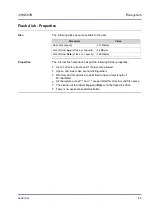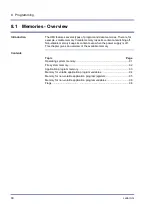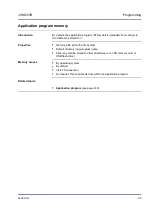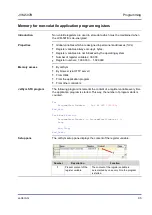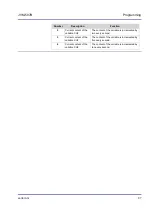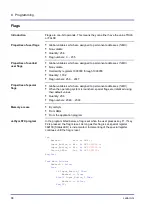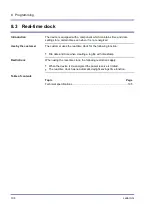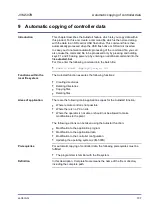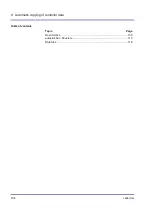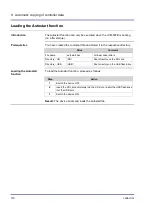
98
Jetter AG
8 Programming
Flags
Flags are one-bit operands. This means they can either have the value TRUE
or FALSE.
Global variables which are assigned to permanent addresses (%MX)
Non-volatile
Quantity: 256
Flag numbers: 0 ... 255
Global variables which are assigned to permanent addresses (%MX)
Non-volatile
Overlaid by registers 1000000 through 1000055
Quantity: 1,792
Flag numbers: 256 ... 2047
Global variables which are assigned to permanent addresses (%MX)
When the operating system is launched, special flags are initialized using
their default values.
Quantity: 256
Flag numbers: 2048 ... 2303
By JetSym
From HMIs
From the application program
In the program listed below, a flag is set when the user presses key F1. If key
F2 is pressed, the flag is reset. As long as this flag is set, special register
362100 (Status LED) is incremented. Incrementing of the special register
continues until the flag is reset.
Var
Merker1: Bool
At
%MX
1
;
Input_Button_1: Bit
At
%XL
361000.0
;
Input_Button_2: Bit
At
%XL
361000.1
;
Status_LEDs: Int
At
%VL
362100
;
End_Var
;
Task
Main
Autorun
Merker1:=
False
;
Loop
If
Input_Button_1
Then
Merker1 :=
True
;
ElseIf
Input_Button_2
Then
Merker1 :=
False
;
End_IF
;
Introduction
Properties of user flags
Properties of overlaid
user flags
Properties of special
flags
Memory access
JetSym STX program


